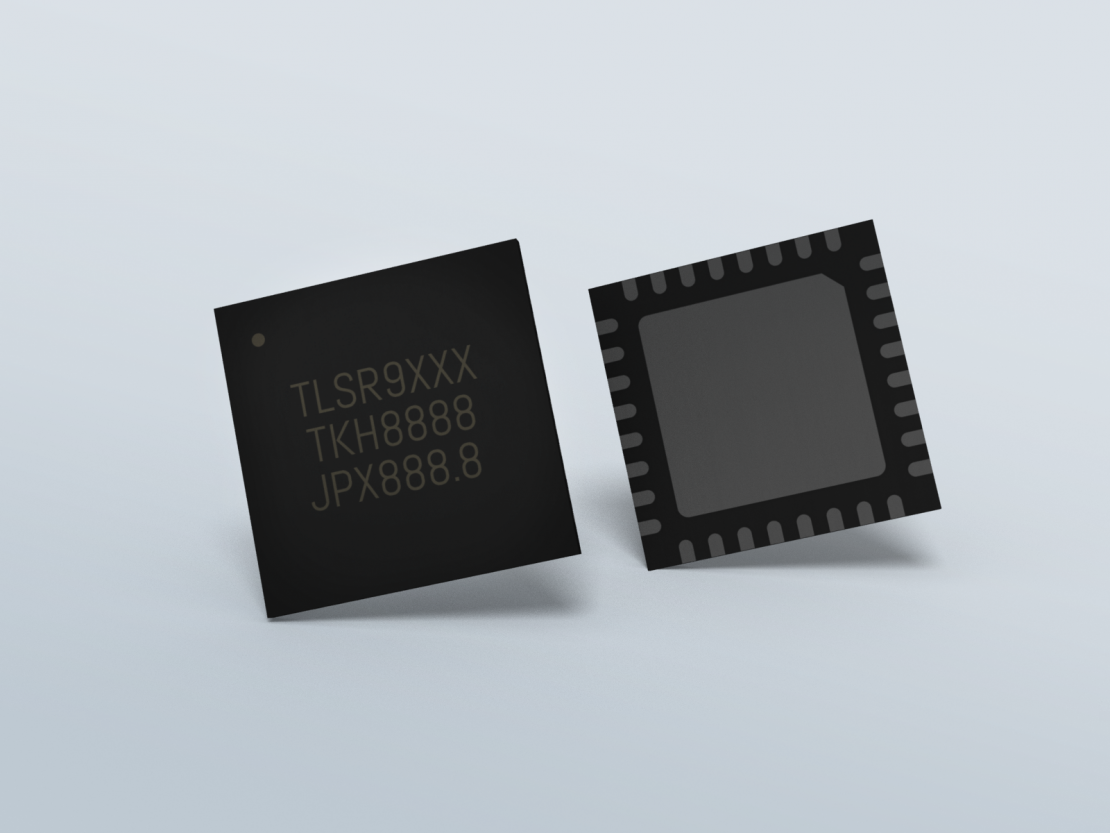



PLEASE ROTATE ME


Telink Staff
November 18, 2020

Telink’s high-performing SoCs are helping build the future of wireless audio, wearable devices, and IoT applications.
Telink Semiconductor is proud to announce the launch of our new TLSR9 series, a high-performing, RISC-V-based system-on-a-chip (SoC) designed for wireless audio, wearable devices, and a variety of cutting-edge IoT applications. Telink is a pioneer in low-energy SoCs for the IoT, and our TLSR8 series powers many popular IoT products. The TLSR9 series is Telink’s first RISC-V-based product line, making it the perfect cornerstone for the next generation of IoT devices.
The TLSR9 series is a high-performance SoC with a powerful 32-bit RISC-V MCU. The standard board’s speed reaches 96MHz and supports a five-stage pipeline, and it features a processing speed of 2.7 DMIPS/MHz with a CoreMark performance score of 3.41MHz. The TLSR9 series also integrates DSP extensions instructions and floating-point arithmetic modules to facilitate sensor and audio algorithm development.
Our new product line supports the latest IoT connectivity standards, including Bluetooth® 5.2. It also supports industry specifications like basic rate (BR), enhanced data rate (EDR), low energy (LE), long range, direction finding (AoA/AoD), Bluetooth Mesh, Zigbee 3.0, HomeKit, 6LoWPAN, Thread, and 2.4 GHz proprietary. The TLSR9 standard board combines the requirements of high-quality wireless audio and wearable technologies on a single SoC with 256KB SRAM and 1MB-2MB Flash. The board also includes additional hardware resources to support product development.
The TLSR9 series contains a powerful AI engine that optimizes the performance of DNN, LSTM, RNN, and other neural networks, accelerates linear algebra vector calculations, and increases audio and signal processing capabilities. It also supports voice wakeup, keyword recognition, heart rate detection, sensor fusion, and the design of low-energy edge technologies for the IoT.
The TLSR9 series features rich digital and analog interfaces, and can connect to a 2-pin SWD or 5-pin JTAG debug port, as well as high-performing AUX, ADC, PWM, USB, 12C SPI, UART, and other flexible IO interfaces and peripheral modules. The product line supports a variety of on-chip security functions including AES hardware encryption, hardware acceleration for elliptic curve cryptography (ECC), and true random number generator. The firmware secure boot mechanism will be provided on the high-end version. The line’s SoC design also features multiple levels of power management and ultra-low-power operations, making it ideal for wearable technologies and other low-energy applications. Further, the TLSR9 series’ extensive integrations help lower overall BOM costs.
For wireless audio, the TLSR9 series supports a variety of high-performance audio codecs, including SBC, OPUS, AAC, and the latest Bluetooth LE 5.2 LC3 audio codec. It supports Bluetooth Classic and Bluetooth LE 5.2 dual-mode True Wireless Stereo (TWS) earbuds, enabling customers to transition smoothly from Bluetooth Classic to the latest Bluetooth solutions. The TLSR9 series also supports audio sharing, meaning users can pair multiple audio devices with a single audio source, enabling simultaneous broadcasting and balancing power consumption among different devices. The product line supports ultra-low-latency audio streaming, which is ideal for e-sports and other applications with strict requirements for minimal delays.
The TLSR9 standard board supports echo-suppression and noise-reduction capabilities, and we plan to release a high-end board that delivers active noise cancellation (ANC) and multi-MIC electronic noise cancellation (ENC) capabilities.
The TLSR9 series supports many packaging designs, including QFN and BGA. Telink already offers development software to alpha clients, and we will gradually provide development kits and SDK support to other customers more widely in 2021. Clients can use a TLSR9 generic starter kit for product development.
Our new product line also features improved hardware development tools. The developer’s environment offers a free Eclipse-based IDE and supports GDB, OpenOCD, and other debugging tools. It supports GCC, LLVM, and other compilation tools to optimize MCU standards libraries, as well as FreeRTOS and other real-time operating systems. We plan to introduce toolkits based on IAR Workbench to provide clients with a more flexible development platform. You can find more details about our development tools on the Telink Wiki, which offers online resources for new chips, tools for application development, and guidance for transferring existing applications to the new TLSR9 series.
From TWS audio devices to cutting-edge wearable technologies, the most popular IoT products are built on the highest-performing solutions. The TLSR9 SoC series is the latest wireless connectivity solution based on the open source RISC-V architecture. It is designed to help IoT designers break the constraints of hardware and software development tools so they can create groundbreaking, high-performing wearable devices, wireless audio devices, and other IoT technologies. The planned TLSR9 series protocol stack and development kit will include Bluetooth dual-mode, TWS audio and audio sharing, wristbands and watches, Bluetooth Mesh, Zigbee, Thread, HomeKit, and more. Please stay tuned for further announcements.